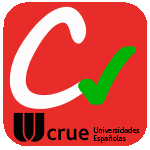Izenburua
Chondroitin and Dermatan Sulfate Bioinks for 3D Bioprinting and Cartilage RegenerationEgilea
Egilea (beste erakunde batekoa)
Beste instituzio
Universidad del País Vasco/Euskal Herriko Unibertsitatea (UPV/EHU)Bioibérica (Spain)
Universidad de Granada
Biomaterials and Nanomedicine (CIBER-BBN)
Instituto de Investigación Sanitaria Bioaraba
Instituto de Ciencia y Tecnología de Polímeros (ICTP-CSIC)
Bertsioa
Postprinta
Eskubideak
© 2022 WileySarbidea
Sarbide bahituaArgitaratzailearen bertsioa
https://doi.org/10.1002/mabi.202100435Non argitaratua
Macromolecular Bioscience Early View. N. artículo 2100435, 2022Argitaratzailea
WileyLaburpena
Cartilage is a connective tissue which a limited capacity for healing and repairing. In this context, osteoarthritis (OA) disease may be developed with high prevalence in which the use of scaffolds ma ... [+]
Cartilage is a connective tissue which a limited capacity for healing and repairing. In this context, osteoarthritis (OA) disease may be developed with high prevalence in which the use of scaffolds may be a promising treatment. In addition, three-dimensional (3D) bioprinting has become an emerging additive manufacturing technology because of its rapid prototyping capacity and the possibility of creating complex structures. This study is focused on the development of nanocellulose-alginate (NC-Alg) based bioinks for 3D bioprinting for cartilage regeneration to which it is added chondroitin sulfate (CS) and dermatan sulfate (DS). First, rheological properties are evaluated. Then, sterilization effect, biocompatibility, and printability on developed NC-Alg-CS and NC-Alg-DS inks are evaluated. Subsequently, printed scaffolds are characterized. Finally, NC-Alg-CS and NC-Alg-DS inks are loaded with murine D1-MSCs-EPO and cell viability and functionality, as well as the chondrogenic differentiation ability are assessed. Results show that the addition of both CS and DS to the NC-Alg ink improves its characteristics in terms of rheology and cell viability and functionality. Moreover, differentiation to cartilage is promoted on NC-Alg-CS and NC-Alg-DS scaffolds. Therefore, the utilization of MSCs containing NC-Alg-CS and NC-Alg-DS scaffolds may become a feasible tissue engineering approach for cartilage regeneration. [-]






















